Female Greek Statues – Top Famous Greek Statues of Women
Nudity, and in particular, the female form, has fascinated artists throughout history. When one thinks of one nude sculpture, one immediately thinks of the white marble statues of Ancient Greece. However, these were not always as accepted as they are today. This notion will be explored through ten of the most famous female Greek statues, both nude and clothed.
A Brief Look at the Role of Women in Ancient Greece
Ancient Greek culture is full of paradoxes. In one sense, women were revered, and goddesses played a major role in the people of Greece’s religious beliefs. This is something that stands out, as most cultures tend to give goddesses a minor role or exclude the divine feminine entirely.
However, even with their strong sense of goddess culture, women in Ancient Greece were still seen as inferior to men.
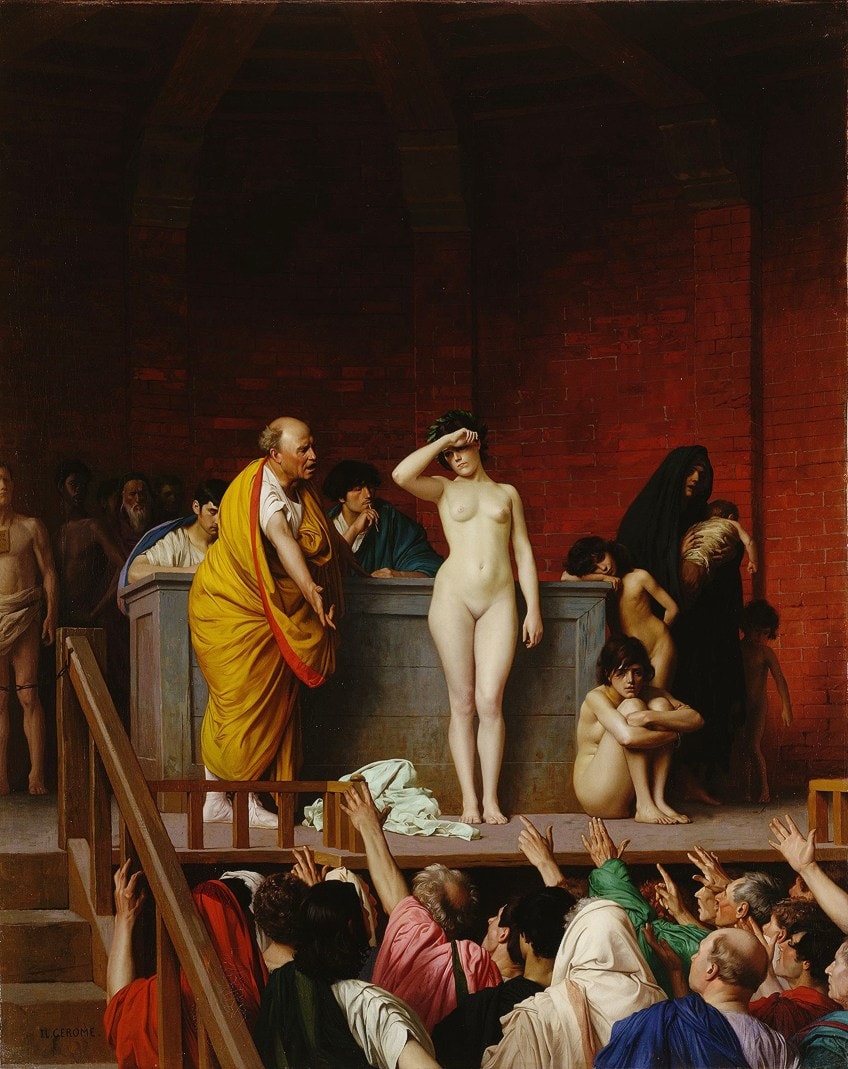
It is hard to get an accurate understanding of Grecian women as most texts from the time were written by men. Yet this itself adds to the narrative. Women in Ancient Greece (in most states) had little to no rights. They could not own property, claim inheritance, or have their name spoken in public. They were not even considered citizens unless attached to a husband or male guardian.
For this reason, there was no place for an unmarried woman in society.
Young girls were married to a man of their father’s choice between the ages of 13 to 15 years old. These men were typically a minimum of 20 years their senior. In some cases, if no suitable match was found, these young women would be made to marry uncles or other male relatives to keep the money within the family.
In Ancient Greece, as in many other cultures around the world, it was completely acceptable for men to engage in extramarital affairs with sex workers. However, women who engaged in moicheia (a concept similar to adultery) would lose their citizenship and their lovers could be lawfully murdered by their husbands.
The Portrayal of the Female Form in Ancient Greece
Until about 4 BC, female Greek sculptures were never depicted in the nude. Male sculptures, however, were almost always nude with their genitalia sculpted in immense detail. This is not so hard to believe given that everyday women were not even allowed to leave the house without covering themselves head to toe. After Praxiteles’ Aphrodite of Knidos (350 BC), nude female Greek statues began to rise in popularity.
However, unlike their male counterparts, only goddesses (and typically only Aphrodite, the goddess of lust) could be depicted in the nude; never earthly women.
Also dissimilar to male states, female Greek statues did not have fully realized genitals. Female reproductive organs would either be covered or left vague because they were considered obscene, and so to put them on a goddess would be blasphemy.

Famous Female Greek Sculptures
In this section, we will take a closer look at ten of the most significant Greek statues of women. By viewing this iconography, historians have learned a lot about Grecian society, their views on women, and their ideals surrounding beauty.
Kore of Auxerre (650 – 625 BC)
| Artist | Unknown |
| Place of Origin | Crete, Greece |
| Date of Creation | 650 – 625 BC |
| Date of Discovery | 1907 |
| Medium | Limestone |
| Dimensions (cm) | 75 |
| Current Location | Louvre Museum, Paris, France |
In 1907, the mysterious Kore of Auxerre was found in the depository of the Museum of Auxerre. The origins of the statue were unknown, as well as how it ended up in a small town in France. This caused the public to take a particular interest in the Kore of Auxerre, which led to the artwork’s reallocation to the Louvre in Paris. After studying the sculpture in depth, it was determined that it likely came from Crete. Similar sculptures were found placed upon graves in Apollonia, which is also in Crete.
It shows distinct characteristics of the Greek Bronze Age (such as the pinched waist) as well as an Egyptian influence (the hair and stiff posture). This, along with carbon dating, allowed it to be dated back to the 7th century BC.
The Greek word kore translates to “maiden” in English and typically refers to unmarried women. However, it has become synonymous with female grave-marking statues. The male equivalent is the kouros, which, unlike the kore, were always nude.
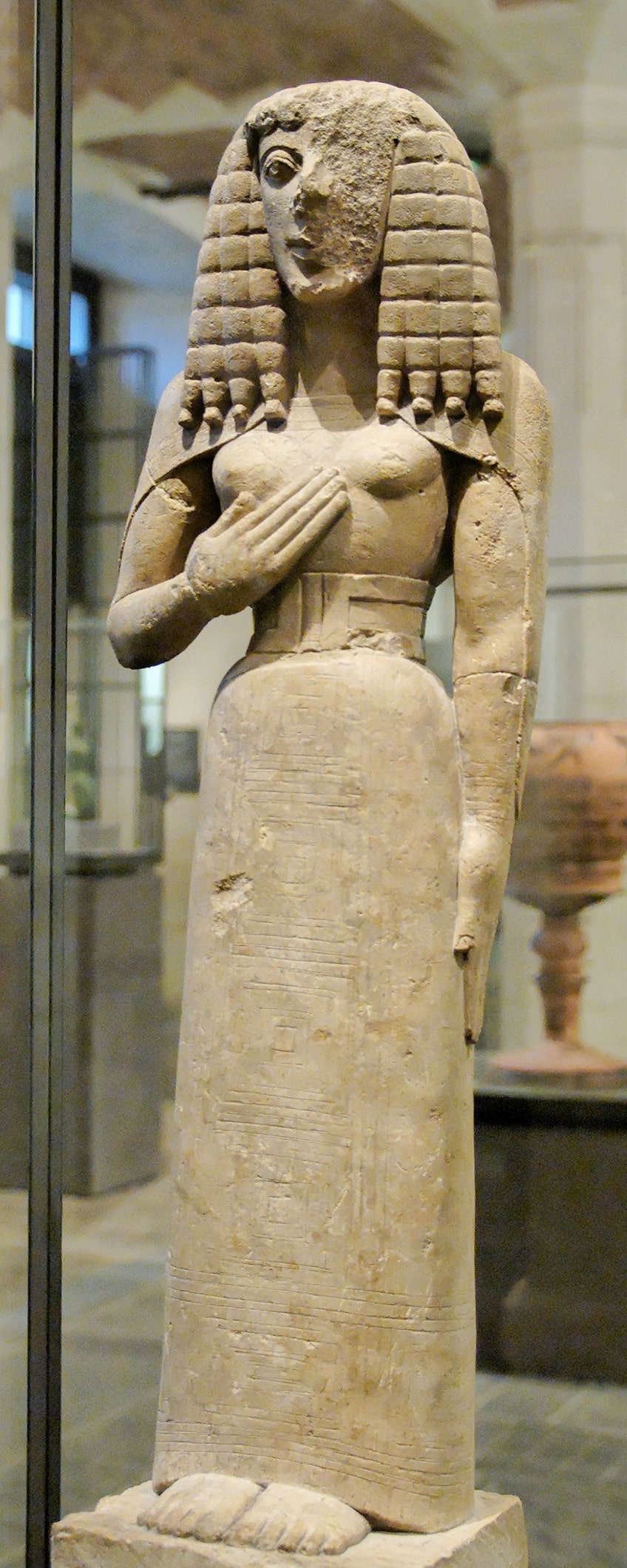
Phrasikleia Kore (550 BC)
| Artist | Aristion of Paros (c. 540 – 525 BC) |
| Place of Origin | Myrrhinous (now Merenta), Greece |
| Date of Creation | 550 BC |
| Date of Discovery | 1972 |
| Medium | Parian marble |
| Dimensions (cm) | 211 (on a 26 cm tall platform) |
| Current Location | National Archeological Museum of Athens, Athens, Greece |
The Phrasikleia Kore is another funerary statue. It is renowned for being one of the most well-preserved female Greek sculptures from its time period. This is because it was buried to prevent it from being destroyed when the infamous dictator Peisistratos came to power again. He was known for desecrating the graves of families that opposed him. This kore is thought to be modeled on the goddess Hestia due to its inscription, which states that a virgin lies there.
The statue is holding a lotus bud, which reinforces the idea that she died before she could “bloom”. The lotus flower is an Egyptian symbol of death, which was adopted by the Ancient Greeks.

Peplos Kore (530 BC)
| Artist | Rampin Master (c. 6 BC) |
| Place of Origin | Athens, Greece |
| Date of Creation | 530 BC |
| Date of Discovery | 1886 |
| Medium | Parian marble |
| Dimensions (cm) | 118 |
| Current Location | Acropolis Museum, Athens, Greece |
The Peplos Kore is unique amongst other Greek statues of women or kore. It is not thought to have been a grave marker but rather a temple decoration. Archeologists believe that the Peplos Kore was intended to be a goddess or a votive statue as a result of the remnants of paint and holes for attaching metallic accessories.
The sculpture’s somewhat relaxed character is also uncharacteristic of “kore” funerary statues.

Athena Parthenos (447 BC)
| Artist | Phidias (c. 490 – 425 BC) |
| Place of Origin | Athens, Greece |
| Date of Creation | 447 BC |
| Date of Discovery | Unknown |
| Medium | Chryselephantine |
| Dimensions (cm) | 1,150 |
| Current Location | Destroyed sometime in the first millennia |
The Athena Parthenos was one of the largest and most extravagant female Greek statues. It was more than 11 meters tall and made from ivory and gold. No expense was spared, as it was commissioned as a gift from the people of Athens to Athena herself. The goddess was said to have been depicted with all of her typical accompaniments, such as her shield, spear, and snake.
The Athena Parthenos did not survive the tests of time. However, it is uncertain whether it was sent to Constantinople (as has been suggested) or whether it was destroyed during the shift from Paganism to Christianity.
Whatever the case may be, it was such an iconic sculpture that many subsequent artists have since tried to create replicas of it using ancient texts to guide them.
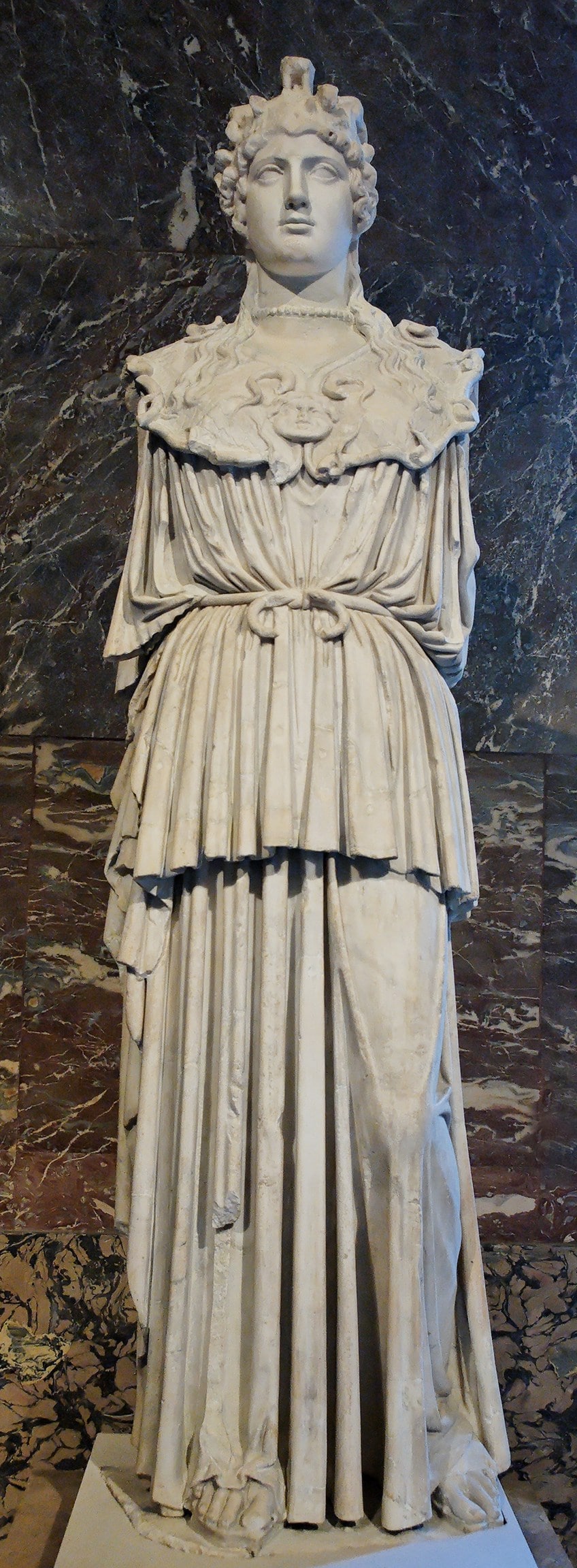
Caryatids of Erechtheion (420 – 415 BC)
| Artist | Diogenes (c. 412 – 323 BC) |
| Place of Origin | Athens, Greece |
| Date of Creation | 420 – 415 BC |
| Date of Discovery | Unknown |
| Medium | Pentelic marble |
| Dimensions (cm) | 231 |
| Current Location | Acropolis Museum, Athens, Greece |
The Caryatids of Erechtheion are six female statues that function as columns to hold up the roof of the Erechtheion (one of the most sacred parts of the Acropolis). Their origin story is one that continually sparks debate. Some believe that the statues represent the women of Caryae, who betrayed Greece when the Persians invaded.
Thus, they were forced to hold up the roof of the Erechtheion as their eternal punishment. Others dispute this theory, believing them to be priestesses dedicated to the goddess Artemis. Mythology states that the priestesses were always beautiful young women who would dance with baskets on their heads to honor the goddess.
Given the importance of the Erechtheion, this theory is more likely.
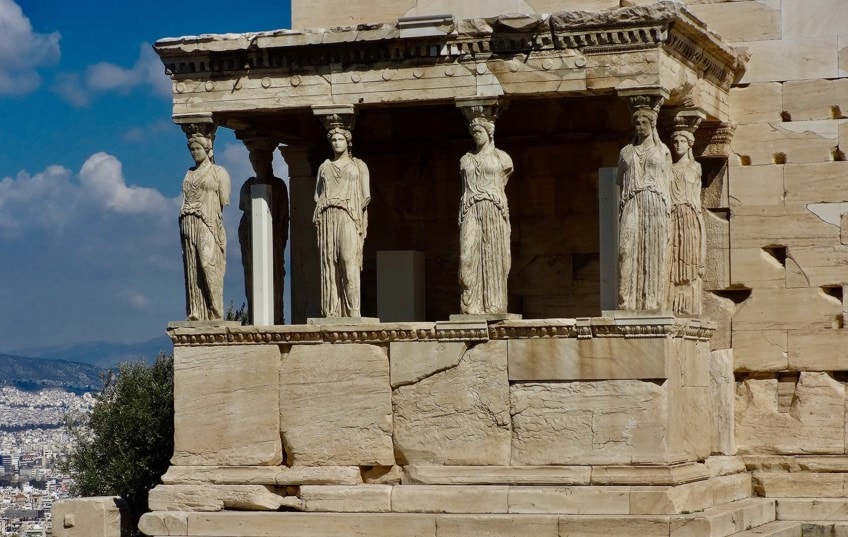
Aphrodite of Knidos (350 BC)
| Artist | Praxiteles of Athens (395 – 330 BC) |
| Place of Origin | Knidos (now Yazikӧy, Turkey), Greece |
| Date of Creation | 350 BC |
| Date of Discovery | Original is no longer in existence |
| Medium | Marble |
| Dimensions (cm) | 168 x 57, 2 |
| Current Location | Roman copy can be seen at the Glyptotek, Munich, Germany |
Aphrodite of Knidos achieved widespread fame due to it being one of the first nude Greek statues of a woman. The original was lost in a fire that took place in Constantinople in 475 AD. Thus, the Roman recreation (formally known as The Ludovisi Cnidian Aphrodite and created in 1 AD by an unknown artist) is the most popular copy of the original sculpture.
The sculpture was commissioned as an idol of the goddess Aphrodite for her temple. It caused a stir amongst the general populace, which put Knidos on the map.
Praxiteles created the sculpture to cause arousal, as this mimicked the effect Aphrodite was meant to have upon men. It is believed that the Aphrodite of Knidos was modeled on Phryne, one of the wealthiest and most sought-after courtesans in Ancient Greece.

Diana of Gabii (347 BC)
| Artist | Praxiteles of Athens (395 – 330 BC) |
| Place of Origin | Gabii, Italy |
| Date of Creation | 347 BC |
| Date of Discovery | 1792 |
| Medium | Marble |
| Dimensions (cm) | 165 |
| Current Location | The Louvre, Paris, France |
Diana of Gabii is a statue that is thought to represent Artemis, the goddess of the moon, animals, and hunting. The goddess was adopted by the Romans and was known to them as Diana. Artemis was also linked to purity and virginity, which explains her modest attire. However, there is some uncertainty as to whether the sculpture was actually created by Praxiteles due to the shorter chiton, which only came into fashion about 20 years after Praxiteles’ time.
Yet, the sculpture is very distinctive of his style, leading to the theory that it was created by one of his sons.
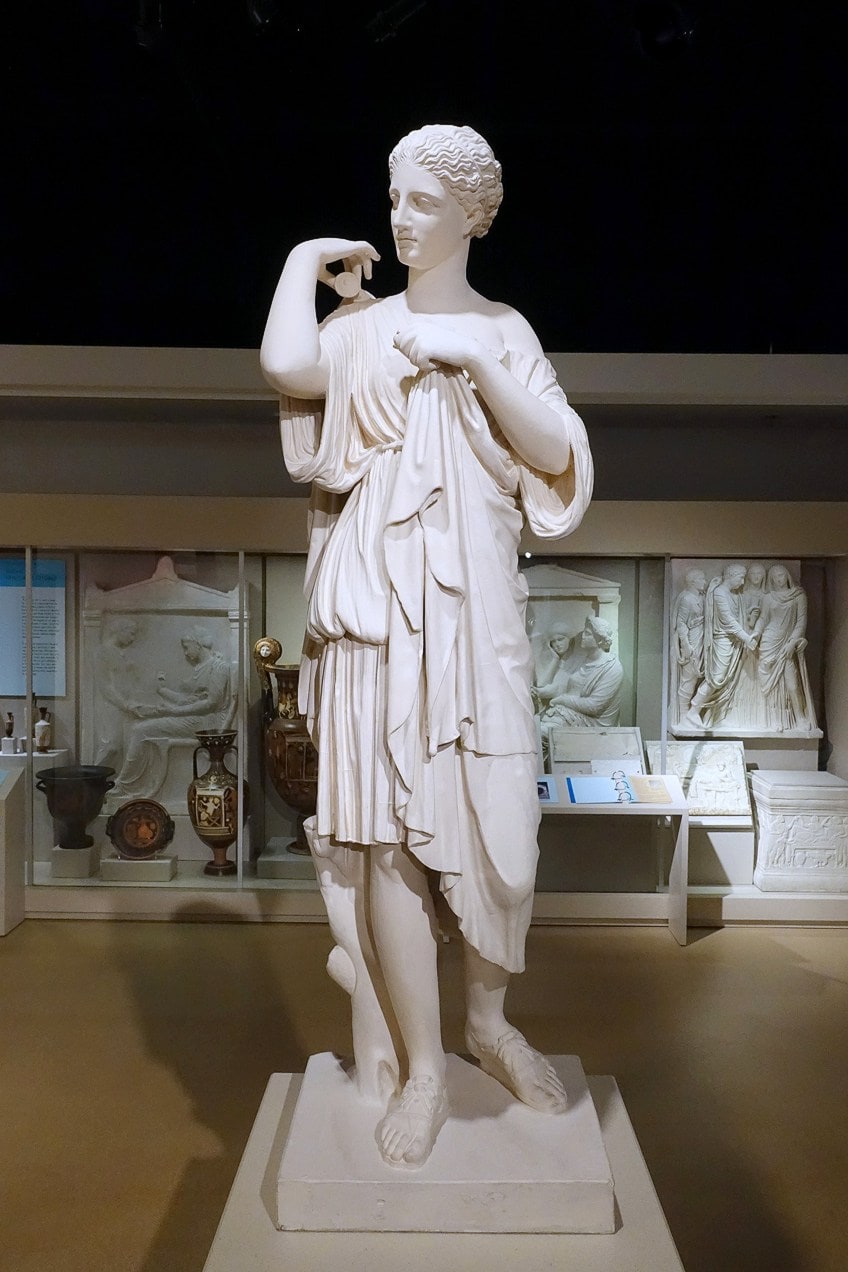
Winged Victory of Samothrace (Nike) (200 BC)
| Artist | Unknown |
| Place of Origin | Samothrace, Greece |
| Date of Creation | 200 BC |
| Date of Discovery | 1863 |
| Medium | Parian marble |
| Dimensions (cm) | 557 |
| Current Location | The Louvre, Paris, France |
The Winged Victory of Samothrace statue, also known as Nike, is one of the few surviving original female Greek sculptures. It was decided that the missing parts of the statue would not be reconstructed during the restoration process in order to preserve its authenticity.
Thus, the Winged Victory of Samothrace, which can be seen at the Louvre in Paris, is missing its head and both arms. Blocks of broken marble found alongside the statue have led archeologists to believe that the sculpture was once standing on a sculpted warship. This is backed up by the movement of its chiton (a feature that was unique amongst Greek statues).
Therefore, the statue is believed to be an offering to the goddess Nike to bring the people of Samothrace victory in their naval battles.
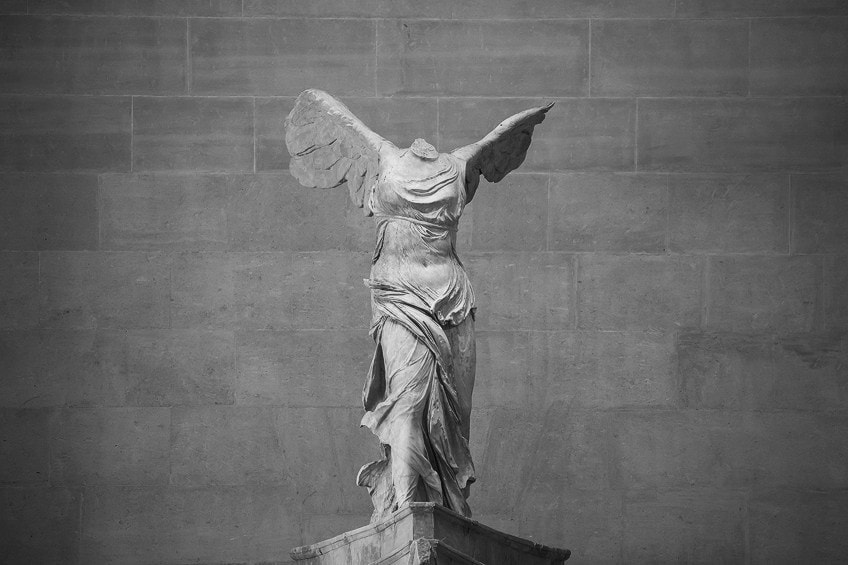
Venus de Milo (130 – 100 BC)
| Artist | Alexandros of Antioch (2 – 1 BC) |
| Place of Origin | Milos, Greece |
| Date of Creation | 130 – 100 BC |
| Date of Discovery | 1820 |
| Medium | Parian marble |
| Dimensions (cm) | 204 |
| Current Location | The Louvre, Paris, France |
The Venus de Milo is one of the most famous female Grecian statues. The sculpture is often referred to in popular culture, with its lack of arms making it easily distinguishable. Although the inscription on the sculpture’s podium says “Venus”, archeologists believe it to be a portrayal of the Greek goddess Aphrodite.
She is depicted semi-nude, her breasts exposed to show off her sensuality. However, her genitals are covered to prevent the statue from appearing crude.
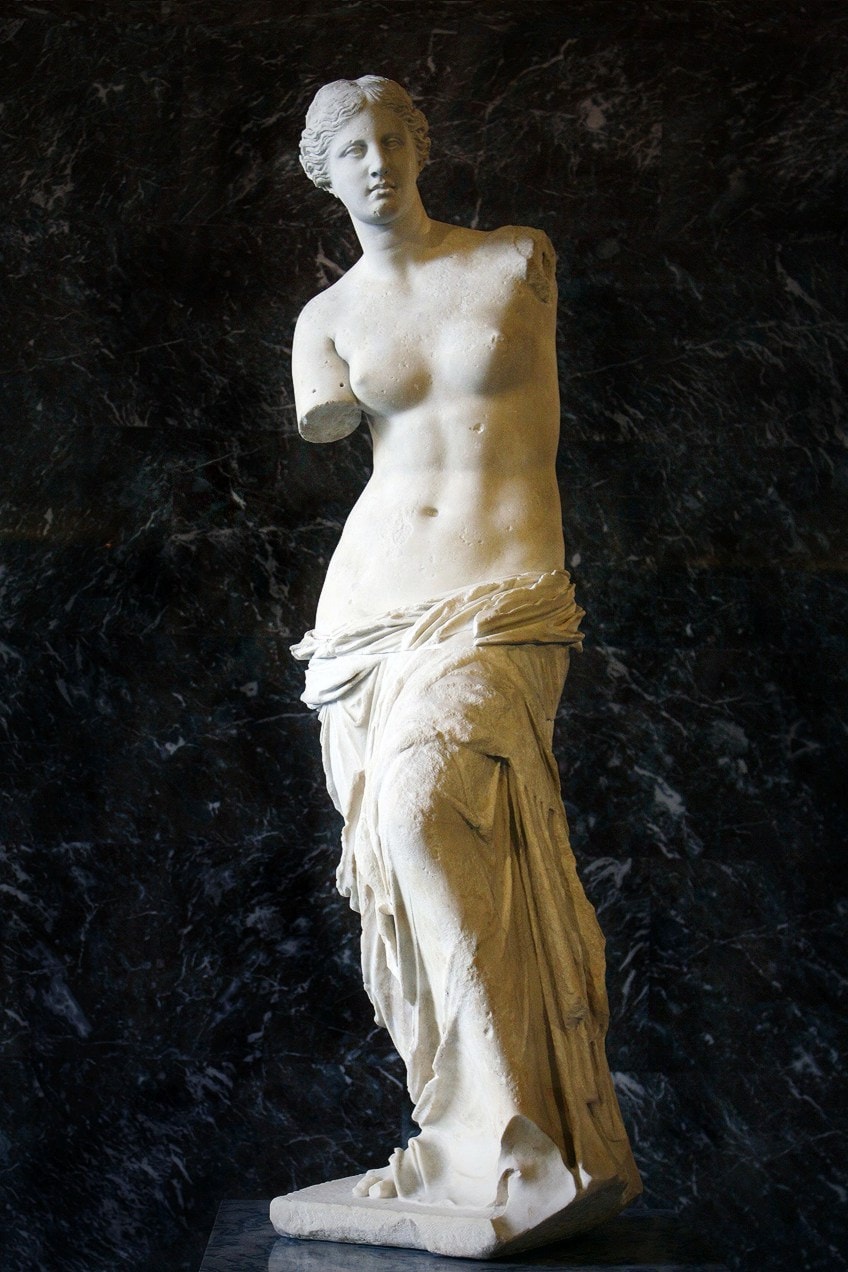
Varvakeion Athena (200 – 250 AD)
| Artist | Unknown |
| Place of Origin | Psychiko, Greece |
| Date of Creation | 200 – 250 AD |
| Date of Discovery | 1880 |
| Medium | Pentelic marble |
| Dimensions (cm) | 105 |
| Current Location | National Archeological Museum of Athens, Athens, Greece |
The Varvakeion Athena was created during the Roman occupation of Greece. It is one of the many copies of the legendary Athena Parthenos, although there are some marked differences. Firstly, this statue is much smaller than the original, is made of marble and not ivory, and has gold paint instead of real gold.
Furthermore, it is missing the spear spoken about in ancient texts about the original statue.

This was a very brief glimpse into the lives of Grecian society and art. However, it is clear that, even in this short article societal norms had a significant impact on the art of the time. Even goddesses were expected to be modest and demure unless they were objects for male pleasure. If you found this article interesting, make sure to do some more reading as there are countless sources at your disposal.
Frequently Asked Questions
What Are Greek Statues of Women Called?
Greek statues featuring women are typically called kore, which means maiden. Statues of everyday women were created in the place of tombstones and Greek statues of women that functioned as pillars were called caryatids.
Why Were Only Greek Goddesses Sculpted Naked?
Although it was common to see Greek statues of nude men, the same cannot be said with regard to women. It was seen as completely inappropriate for earthly women to be depicted in the nude. Only female deities – and even then, only really Aphrodite – could be sculpted in the nude. Aphrodite’s nudity was intended to sexualize her, hence why other goddesses were almost always depicted with clothing.

Emma completed her Bachelor’s Degree in International Studies at the University of Stellenbosch. She majored in French, Political Science, and History. She graduated cum laude with a Postgraduate Diploma in Intercultural Communication. However, with all of these diverse interests, she became confused about what occupation to pursue. While exploring career options Emma interned at a nonprofit organization as a social media manager and content creator. This confirmed what she had always known deep down, that writing was her true passion.
Growing up, Emma was exposed to the world of art at an early age thanks to her artist father. As she grew older her interests in art and history collided and she spent hours pouring over artists’ biographies and books about art movements. Primitivism, Art Nouveau, and Surrealism are some of her favorite art movements. By joining the Art in Context team, she has set foot on a career path that has allowed her to explore all of her interests in a creative and dynamic way.
Learn more about the Art in Context Team.
Cite this Article
Emma, Littleton, “Female Greek Statues – Top Famous Greek Statues of Women.” Art in Context. November 15, 2022. URL: https://artincontext.org/female-greek-statues/
Littleton, E. (2022, 15 November). Female Greek Statues – Top Famous Greek Statues of Women. Art in Context. https://artincontext.org/female-greek-statues/
Littleton, Emma. “Female Greek Statues – Top Famous Greek Statues of Women.” Art in Context, November 15, 2022. https://artincontext.org/female-greek-statues/.










Very informative article, thank you!